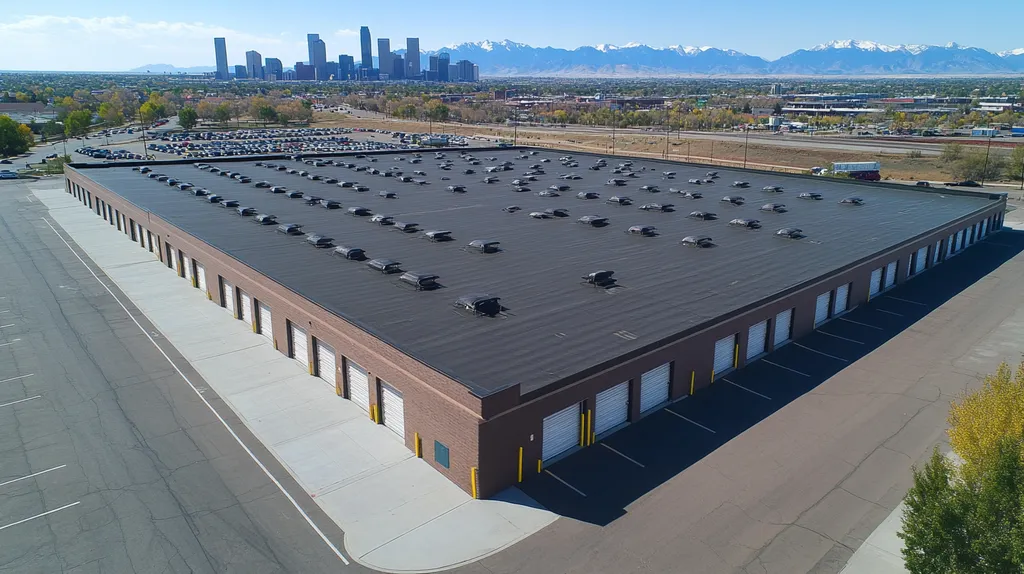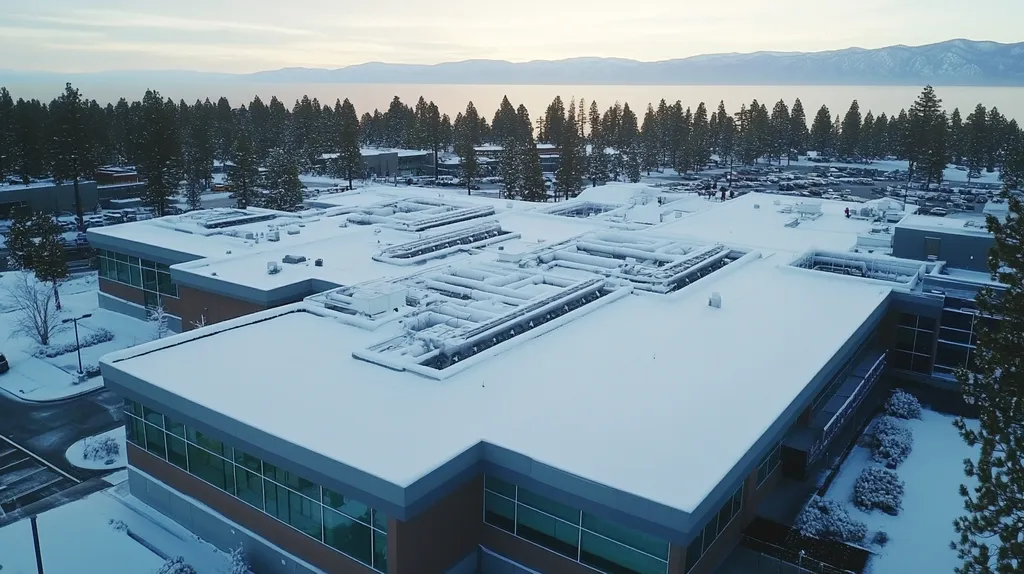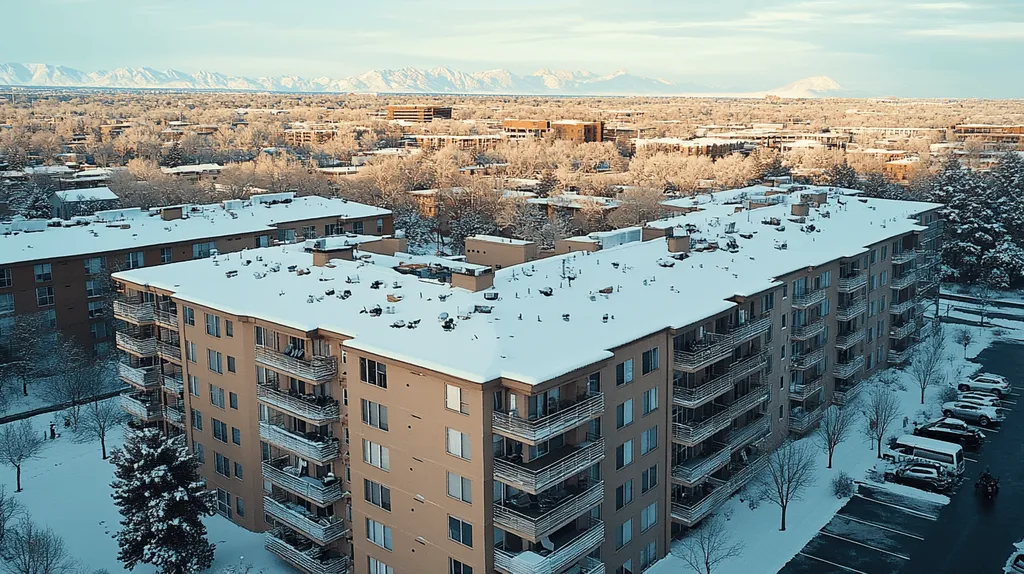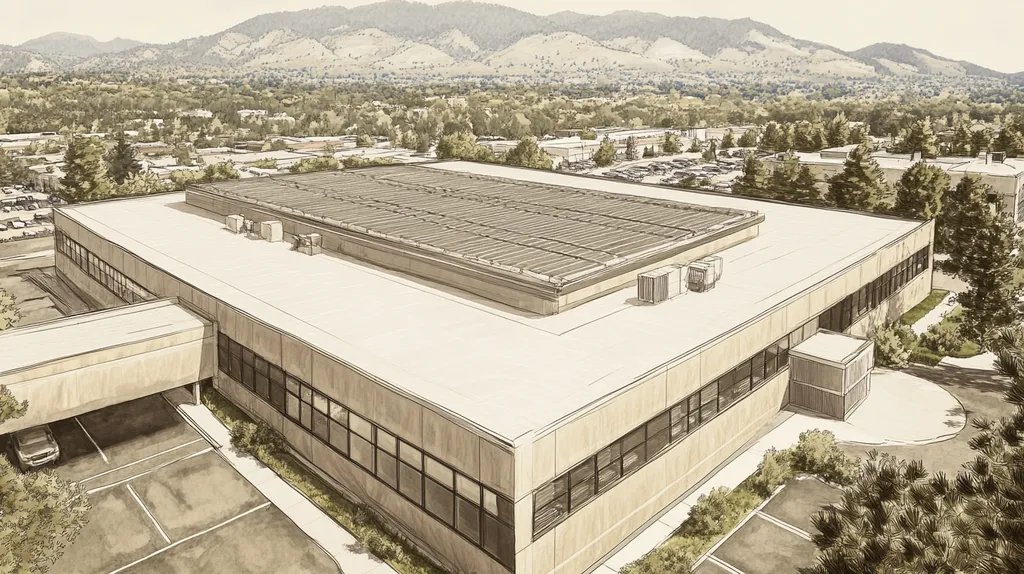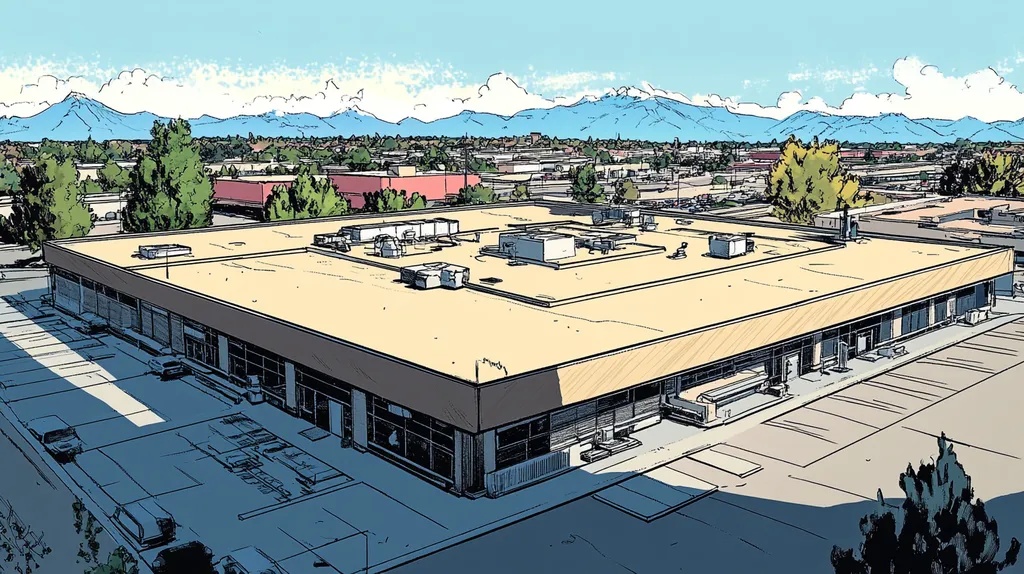Commercial property owners lose millions annually due to misunderstandings about roof coating lifespans, with studies showing 35% of premature roof failures stem from incorrect maintenance expectations.
The stakes are particularly high as material costs have surged 40% since 2020, making uninformed decisions about roof coatings increasingly costly for facility managers.
This comprehensive analysis cuts through common misconceptions about commercial roof coating durability, examining evidence-based data on actual performance metrics and critical maintenance requirements.
From the impact of regional climate variations to the latest advances in coating technology, building owners will discover essential insights for maximizing their roofing investments and avoiding costly failures.
SECTION 1: COMMON MISCONCEPTIONS
Many property owners and facility managers face substantial risks due to widespread myths surrounding commercial roof coatings. Misunderstanding the actual lifespan and durability of various roofing materials can significantly impact financial planning. For example, assuming a particular roof type will last longer than it typically does may result in insufficient budgeting for necessary maintenance and replacements. This section debunks these misconceptions, emphasizing the necessity of having accurate information when making commercial roofing decisions.
Overestimating EPDM Roof Lifespan
Ethylene Propylene Diene Monomer (EPDM) is a well-liked option for flat roofs; however, many owners mistakenly believe it can endure for two decades or more without issues. In truth, while EPDM roofs can last anywhere from 15 to 25 years, their durability heavily depends on environmental factors.
Without regular maintenance, exposure to UV rays, extreme temperatures, and moisture can accelerate wear and tear. Weakening seams and punctures not only increase leak risks but may also lead to costly water damage and repairs.
Building owners should not depend solely on the perceived longevity of EPDM. Regular inspections combined with timely maintenance are crucial for maximizing a roof’s lifespan and ensuring optimal performance.
By grasping EPDM’s true lifespan, property managers can set realistic expectations, allowing them to budget effectively for future repairs or replacements.
Misunderstanding TPO Roof Durability
Thermoplastic Olefin (TPO) roofing is frequently celebrated for its energy efficiency and budget-friendly nature. Nevertheless, misconceptions about its durability often lead some to incorrectly assume it can exceed its expected lifespan of 15 to 20 years without ongoing maintenance.
Over time, many TPO roofs may exhibit brittleness and cracking, particularly in harsh weather conditions. Overlooking these warning signs can result in premature failure, which diminishes the building’s energy efficiency and risks structural damage.
Property owners need to recognize that, while TPO roofs are a sensible choice, they require consistent maintenance to uphold their integrity. Understanding these limitations facilitates better planning and investment decisions.
Investing in regular inspections can help identify issues early on, extending the life of a TPO roof and ensuring that it performs efficiently for as long as possible.
Ignoring Seam Weakness in Metal Roofs
Metal roofs are often celebrated for their durability and ability to withstand harsh weather. However, a prevalent misconception is that they require no maintenance. In reality, the seams of metal roofs are vulnerable to deterioration over time.
As the metal expands and contracts with temperature fluctuations, seams can weaken, leading to gaps or leaks. Failure to address these weaknesses can result in significant damage, compromising the building’s structural integrity.
Regular inspections that prioritize seam integrity are essential for maintaining high-performing metal roofs. This proactive approach can prevent minor issues from evolving into major, costly repairs.
Building owners must understand that while metal roofs are robust, they still necessitate attention to sustain their many advantages. A well-maintained metal roof can provide enduring protection and invaluable peace of mind.
SECTION 2: PRACTICAL IMPLICATIONS
The lifespan of a commercial roof coating isn’t just a number; it’s significantly affected by real-world conditions. For property owners and facility managers, recognizing these factors is crucial for making informed decisions about roofing investments. Key aspects like climate, maintenance, and regular inspections can drastically influence how long a roof will perform effectively. Ignoring any of these elements could lead to costly repairs or even early roof failure.
Impact of Climate on Roof Lifespan
Climate is a powerful influencer of commercial roof longevity. Different regions face unique weather patterns that can make or break a roof’s durability. For example, roofs in areas with intense heat may suffer from thermal expansion, leading to quicker deterioration, while those in frigid climates might be at risk for ice dams that can harm coatings.
Moisture also plays a critical role. In humid locations, mold and mildew can thrive, compromising roof coatings and leading to premature damage. Research shows that roofs subjected to heavy rainfall may exhibit wear much earlier than roofs in dry climates.
Additionally, UV radiation can accelerate the degradation of roof coatings, particularly in sun-soaked areas. A solid understanding of local climate conditions is essential for property owners when choosing the right roofing materials and coatings.
In summary, climate isn’t just a peripheral consideration; it’s a fundamental factor in assessing the expected lifespan of any commercial roofing system.
Role of Maintenance in Extending Roof Life
Routine maintenance is vital for prolonging the lifespan of a commercial roof coating. Like any valued asset, a roof demands regular care to perform at its best. Neglecting basic maintenance tasks can quickly lead to surface deterioration and increased expenses down the road.
Regular inspections empower property managers to catch small issues before they escalate into significant problems. For instance, minor seam failures can turn into leaks if left unaddressed. Ensuring that drainage systems are functioning properly is also crucial; clogged gutters and drains can result in water pooling that degrades coatings at an alarming rate.
Keeping comprehensive maintenance records further aids in tracking the roof’s condition. A well-maintained roof can outlast a neglected one by several years. Ultimately, investing in routine upkeep is a smart strategy, enhancing a roof’s lifespan while minimizing repair costs.
Consequences of Neglecting Regular Inspections
Skipping regular inspections can have severe implications for a commercial roof’s integrity. When inspections are infrequent or ineffective, minor setbacks can go unnoticed, evolving into major, expensive repairs. For example, small cracks in the coating can allow moisture to penetrate, resulting in significant structural damage.
Add to that the financial repercussions: failures in inspection routines can lead to increased insurance claims. Insurers may deny coverage for roof failures if maintenance records are absent. Committing to a solid inspection schedule not only identifies issues early but also keeps property owners compliant with insurance requirements.
Moreover, neglecting inspections risks diminishing a property’s value over time. Prospective buyers may hesitate to invest in buildings with poorly maintained roofs, hindering owners’ ability to recover their investments in future sales or leases.
Ultimately, prioritizing regular inspections is essential for maintaining a commercial roof’s health and unlocking its full potential lifespan.
SECTION 3: COST OF MISINFORMATION
The stakes are alarmingly high when misinformation clouds decisions about commercial roof coatings. Property owners may confront significant financial burdens stemming from premature roof replacements—all due to a lack of understanding regarding the true lifespan of these coatings. Studies reveal that nearly 30% of building owners replace their roofs unnecessarily, resulting in wasted resources and increased costs that could have been avoided.
Financial Burden of Premature Replacement
Replacing a commercial roof is an expensive endeavor and a major disruption for any business. On average, the cost of installing a new roof ranges from $5.00 to $10.00 per square foot, which means that a 20,000 square foot building could face expenses between $100,000 and $200,000.
Many property owners mistakenly equate roof repairs and coatings with complete roof replacements due to misconceptions about their lifespans. This misunderstanding can lead to unnecessary spending on major projects that could have been avoided with proper coating maintenance, which is generally much more cost-effective.
This financial burden places additional stress on businesses, diverting crucial funds from day-to-day operations. Furthermore, the disruption caused during a roof replacement can result in tenant dissatisfaction and even temporary vacancies.
Empowering property owners with accurate knowledge of roofing options can lead to more informed and cost-effective decisions. Understanding the true longevity of coatings can translate into substantial long-term savings for businesses.
Hidden Costs of Water Damage and Leaks
Misinformation about the longevity of roof coatings can significantly increase the risk of water damage. When coatings are left unmaintained or not updated, micro-leaks can go unnoticed, leading to extensive damage within the building over time.
This unseen damage may lead to mold infestations, weakened structural integrity, and compromised insulation—all of which incur extremely high remediation costs that can escalate into the tens of thousands.
Furthermore, any downtime for leak repairs can disrupt daily operations, leading to financial loss and client dissatisfaction. An unexpected interruption in business due to repairs can create a ripple effect of challenges that threaten stability.
Incorporating regular inspections and a solid maintenance plan can significantly mitigate these risks. Knowledge is key for property owners looking to protect their assets from the potentially crippling costs of hidden damage.
Loss of Energy Efficiency and Increased Bills
A flawed understanding of roof coatings can lead to energy inefficiency in buildings. Roof coatings are specifically designed to reflect sunlight, helping to maintain cooler indoor temperatures and reduce energy costs. However, if a coating is poorly maintained or becomes outdated, it may fail to provide these essential benefits, forcing HVAC systems to work harder.
Data shows that neglecting roof maintenance can result in a 10-20% increase in annual energy expenses. For a property spending $50,000 on energy, this could translate to an additional $5,000 to $10,000 per year in wasted costs.
The implications of increased energy consumption extend beyond immediate expenses; organizations may face greater carbon footprints that could result in regulatory scrutiny and increased compliance costs related to sustainability.
Maximizing the lifespan and efficiency of roof coatings can lead to significant operational cost savings. Making informed decisions about maintenance will help ensure facilities remain energy-efficient, ultimately reducing long-term expenses.
SECTION 4: REALITY CHECK
Property owners must grasp the true lifespan of commercial roof coatings to avoid costly surprises. a misunderstanding about roof longevity can lead to unexpected failures and significant financial setbacks. While some coatings boast up to 20 years of service, the reality often reveals a shorter lifespan influenced by various crucial factors. This section will delve into the actual durability of different materials, key elements that impact roof longevity, and the vital importance of quality and installation.
Actual Lifespan of Different Roof Materials
The lifespan of commercial roof coatings can vary widely depending on the material chosen. For instance, acrylic coatings generally last between 10 to 15 years, while silicone coatings may provide protection for up to 20 years with consistent maintenance. Understanding these differences empowers property managers to choose the right materials suited for their specific building needs.
In terms of single-ply options, Thermoplastic Olefin (TPO) roofs can typically last from 15 to 25 years, while Ethylene Propylene Diene Monomer (EPDM) roofs usually fall within a similar range. Recognizing these distinctions allows for more accurate budgeting and planning for maintenance and replacement timelines.
Moreover, energy-efficient reflective coatings may lead to savings on cooling costs but often necessitate more frequent reapplication. Owners should consider both the lifespan and the performance characteristics of these materials when making decisions.
By thoroughly understanding the expected lifespans of various coatings, commercial property owners can strategically invest in their roofing solutions, ensuring financial efficiency and long-term viability.
Factors Affecting Commercial Roof Longevity
Multiple external factors can drastically influence how long commercial roof coatings endure. Weather impacts, such as prolonged exposure to harsh UV rays, heavy rainfall, and extreme temperature fluctuations, can severely compromise roofing materials. Regions with more intense sun exposure may require more durable, high-quality coatings to protect against accelerated deterioration.
The building’s location can also play a significant role. Urban areas face a higher level of pollution and debris, which can speed up the deterioration of roofing materials. Understanding these environmental impacts is key for establishing appropriate maintenance schedules and repair protocols.
The roof’s design and pitch are critical factors as well. Flat roofs, for example, are more susceptible to ponding water, which can quickly lead to the failure of coatings. Installing efficient drainage systems is essential to divert water and mitigate this risk.
Lastly, routine maintenance is vital. Regular inspections and addressing minor issues promptly can prevent small problems from escalating into major repairs that could shorten the roof’s life. Property owners should take a proactive stance in managing their roofs to extend their useful life.
Importance of Material Quality and Installation
Selecting high-quality materials for a commercial roof is fundamental to ensuring its longevity. Premium coatings often demonstrate increased resilience to harsh weather conditions and UV degradation, providing a better return on investment. It is imperative to choose reputable manufacturers who adhere to industry standards to bolster performance.
Equally important is the roof’s installation. Even top-notch materials can fail if not properly installed. Engaging certified and experienced contractors ensures that coatings are applied correctly, which enhances adhesion and overall durability.
Following manufacturer guidelines during installation is critical for maximizing both performance and warranty coverage. Adherence to specified procedures can safeguard warranties and prevent unexpected costs from arising.
In conclusion, prioritizing material quality and professional installation is essential for achieving the desired lifespan of commercial roof coatings. Property owners must be diligent in these areas to protect their investments and secure long-term satisfaction.
SECTION 5: EVIDENCE-BASED ALTERNATIVES
With the stakes higher than ever for property owners to maximize their roofing investments, it’s essential to explore effective alternatives. Alarming statistics indicate that up to 75% of commercial roofs suffer from premature failure due to neglect and poor maintenance. By understanding viable options—such as roof restoration systems, intelligent monitoring solutions, and proactive maintenance strategies—property owners can significantly prolong the lifespan and functionality of their roofing systems. This section examines these evidence-based alternatives that can provide substantial cost savings and enhance property value.
Benefits of Roof Restoration Systems
Roof restoration systems present a savvy, cost-effective solution to prolong existing roofs without undergoing a full replacement. By employing specialized coatings, these systems create a durable protective barrier against the elements. Remarkably, roof restoration can extend a roof’s lifespan by up to 15 years when compared to more traditional, ineffective methods.
Additionally, these restoration systems enhance energy efficiency. Reflective coatings diminish heat absorption, leading to notable reductions in energy bills that, especially for large commercial properties, can save thousands annually.
Beyond financial benefits, restoration systems promote environmentally-friendly practices. By minimizing roofing waste and decreasing overall energy consumption, they contribute to the sustainability goals that are becoming increasingly vital for modern businesses.
In summary, adopting roof restoration systems not only boosts the roof’s performance but also generates substantial cost savings, making it a preferred choice for astute property owners.
Advantages of Intelligent Rooftop Monitoring
Implementing intelligent rooftop monitoring offers a proactive edge in roof management. These advanced systems utilize technology to assess condition in real-time, providing early warnings that facilitate timely repairs and prevent minor issues from escalating into expensive problems.
For instance, sensors that detect moisture levels or temperature changes can highlight areas at risk of damage. Addressing these alerts swiftly can significantly reduce repair expenses and extend a roof’s overall longevity.
Moreover, the data gathered empowers facility managers to make informed choices regarding maintenance schedules and budget allocations. This strategic approach ensures that resources are optimally utilized to promote the roof’s health.
Incorporating intelligent rooftop monitoring not only enhances building management but also boosts safety and operational efficiency. The substantial returns on investment make this technology an indispensable tool in the realm of facility management.
Effective Maintenance Strategies for Extended Life
Implementing effective maintenance strategies is crucial to extend the lifespan of commercial roofs. Routine inspections, ideally performed at least twice a year, can spotlight issues before they evolve into significant repairs. These inspections should prioritize common concerns like debris accumulation, membrane integrity, and flashing conditions.
Regular maintenance tasks such as cleaning gutters, properly sealing seams, and removing obstructions can greatly diminish the likelihood of water intrusion. Even minor water issues have the potential to lead to serious damage if neglected.
Further, creating a responsive maintenance plan based on inspection results can optimize budget performance. This proactive strategy reduces the frequency of emergency repairs, facilitating predictable budgeting.
Ultimately, committing to systematic maintenance not only prolongs the roofing system’s life but also ensures peace of mind. Property owners are investing in a strategy that yields significant long-term benefits.
SECTION 6: TEST AND VERIFY
Prompt leak detection and regular maintenance are essential for commercial property owners, saving potentially thousands of dollars in unexpected costs. Alarmingly, studies indicate that roofs subjected to consistent inspections can last up to 25% longer than those left unattended. This section delves into effective early leak detection methods, the critical importance of regular inspections, and how advanced technology plays a vital role in verifying roof condition—all key to safeguarding the longevity of commercial roof coatings.
Methods for Early Leak Detection
Early leak detection is crucial for maintaining a strong and functional commercial roof. One particularly effective method is infrared thermography, which detects temperature differences that signal moisture lurking beneath the surface. This cutting-edge, non-invasive technique can swiftly identify problem areas before they escalate into larger, costlier issues.
Moisture mapping provides another valuable approach. Utilizing specialized equipment, this method scans the roof to locate wet spots accurately. Regular water testing is also essential; ensuring drainage systems are working effectively can prevent standing water, a known contributor to reduced roof lifespan.
Implementing these proactive measures not only averts serious damage but also enhances the return on investment for roofing systems. Addressing leaks early allows for timely repairs, helping property owners avoid costly water damage claims.
Ultimately, integrating early leak detection methods into a routine maintenance plan is transformative, enabling commercial roof coatings to achieve their full potential lifespan.
Importance of Regular Roof Inspections
Regular roof inspections are a cornerstone of effective roof maintenance, yet many property owners overlook this crucial practice. Research suggests that properties with routine inspections experience fewer weather-related damages and benefit from longer-lasting roofs. Inspections typically include checking for worn or cracked coatings, which—if neglected—can lead to leaks and significant repair costs.
Experts recommend conducting evaluations at least twice a year, ideally during spring and fall, to counter seasonal extremes. This proactive strategy not only surfaces current issues but also anticipates potential problems before they turn into major financial burdens.
Engaging professional roofers during inspections can provide invaluable insights and identify areas that an untrained eye might miss. Their expertise enables tailored recommendations based on the unique needs and conditions of each building.
By prioritizing regular inspections, property owners can better manage risks and amplify the longevity of their commercial roofs.
Verifying Roof Condition with Advanced Technology
Recent advancements in roofing technology have revolutionized how roof conditions are verified. Drones equipped with high-resolution cameras offer aerial views that facilitate detailed inspections without interrupting daily operations. This innovative technology enables a comprehensive assessment of the roof’s surface, spotlighting potential problem areas that might be obscured from ground view.
Building information modeling (BIM) also plays a key role, helping project managers visualize the entire lifecycle of a roof. BIM can simulate various weather impacts, assisting in crafting effective maintenance schedules.
Furthermore, modern data analytics tools allow for the processing of historical weather data and maintenance records, predicting optimal times for inspections and identifying areas that might need attention. This predictive maintenance approach not only saves time but also optimizes resource allocation.
Incorporating advanced technology into roof verification enhances maintenance strategies and elevates the level of planning needed for effective roof management.
The Bottom Line
With commercial roof coating failures costing property owners over $3.5 billion annually, understanding true product lifespans has never been more critical.
Research confirms that implementing proper maintenance protocols and selecting appropriate coatings can extend roof life by 40-60%, translating to hundreds of thousands in savings for typical commercial properties.
Advanced monitoring technology and restoration systems now offer building owners unprecedented control over roof performance and longevity, provided they act on accurate information rather than common misconceptions.
Moving forward, successful commercial property management will depend on embracing evidence-based approaches to roof coating selection, maintenance, and monitoring – transforming what was once a liability into a properly managed asset.
The future of commercial roofing belongs to those who recognize that coating lifespan isn’t about luck – it’s about leveraging proven systems and strategies.
FREQUENTLY ASKED QUESTIONS
Q. What misconceptions do property owners have about commercial roofs?
A. Property owners often overestimate the lifespan of commercial roofs like EPDM, leading to budget shortfalls. Many think these roofs are maintenance-free or last much longer without care. Regular inspections and understanding the real lifespan can help avoid costly repairs.
Q. How does climate affect the lifespan of an industrial roof?
A. Climate plays a huge role in the longevity of industrial roofs. Harsh weather conditions like UV exposure, heavy rainfall, or extreme temperatures can wear down roof coatings faster. Being aware of these regional climate factors helps in choosing the right materials and maintenance strategies.
Q. What are the financial consequences of misinformation about roof coatings?
A. Misinformation can lead to unnecessary roof replacements, costing property owners significant funds. Many end up replacing roofs prematurely due to misunderstanding maintenance needs and lifespan, diverting funds from operations and causing disruptions. Accurate information is essential for cost-effective solutions.
Q. What factors truly influence the lifespan of commercial roof coatings?
A. The actual lifespan of coatings depends on material quality, installation, environmental effects, and ongoing maintenance. Elements like UV exposure, rain, temperature fluctuations, and roof design also play a critical role. Understanding these factors aids in better decision-making and budgeting.
Q. How can restoration systems benefit my commercial roof?
A. Roof restoration systems provide a cost-effective alternative to complete replacement. They extend a roof’s life by applying protective coatings, which also improve energy efficiency and reduce costs. This solution is sustainable and minimizes waste, making it a smart choice for property owners.
Q. Why are regular inspections important for commercial roofs?
A. Regular inspections catch issues early, preventing small probems from escalating into costly repairs. They ensure roof integrity and help maintain long-term performance. Experts suggest conducting inspections at least twice a year to address any potential problems before they lead to significant financial burdens.
Q. What unexpected costs can arise from roof neglect?
A. Neglecting roof maintenance can lead to hidden damages like mold, leaks, and structural issues. These can result in significant repair costs and operational downtime. Proactive maintenance and inspections are crucial to avoiding these unexpected financial setbacks.


